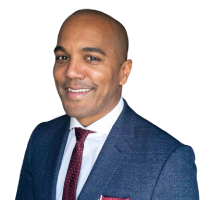
Emil Mckenzie, Financial Planner at Progeny
By Emil Mckenzie, Financial Planner at Progeny
An important aspect of the trustee role is working collaboratively with other professionals. Similar to the role of a non-executive director, they act as custodians whose duty is to consult, challenge and make important decisions in a number of areas.
Having collaborated with a number of trustees in my role as a financial adviser, it’s important that they are equipped to ask informed questions in relation to the investment of trust monies. One of the key principles of the Trustee Act 2000 is ensuring that the portfolio strategy for the trust funds is suitable and remains so, but ensuring this can be challenging when it’s not a trustee’s own area of expertise.
In trying to ensure that the portfolio strategy for the trust funds is suitable there are a whole plethora of considerations, including the investment term, advice charges, the type of investment strategy, level of investment risk and tax treatment of the recommended solution, to name but a few.
To help aid informed questioning, here are three key areas where trustees can consider questioning their financial adviser or asset manager, in relation to an investment recommendation for trust monies.
How will the portfolio act in different market conditions?
A key aspect of good financial planning is to talk about the ‘what-if’ and worst-case scenarios.
Although past performance is not an indicator of future returns, it is sensible to look at how portfolios have reacted in various market conditions in the past. This can help to give an indication as to how they may react in similar situations in future, good and bad.
The ‘what if’ can be immensely powerful in this situation, as keeping in mind the tolerance for market falls and losses can help trustees to balance the risks and rewards of investing in the markets on the one hand, with the ultimate objective of the trust funds on the other. For example, would they be comfortable seeing the portfolio fall by more than 10% in the short term? Based on past performance, how long would the portfolio take to recover from such a fall in a time of market stress and is this tolerable or consistent with the longer-term objectives of the trust fund?
Choosing the correct tax wrapper
Whilst choosing the appropriate portfolios and funds is an important factor in performance, of almost equal importance is choosing the correct tax wrapper in which to hold those funds. Whether it is an Open-Ended Investment Company (OEIC), unit trust, investment bond or General Investment Account (GIA), different wrappers will suit different investors. There are a number of tax considerations to bear in mind and further factors, such as growth, portfolio yield and investment term that can impact on the relative attraction of the respective tax wrappers, all of which need to be weighed up.
Some key considerations for trustees to cover in conversations with their adviser about tax wrappers include: the ultimate timescale for the trust investment; whether the funds need to provide income or are invested for longer term capital growth; and of course, the likely tax status of the ultimate beneficiary/beneficiaries of the trust and how will this be impacted by pursuing one tax efficient vehicle over another.
Is the recommendation of an active, passive or bespoke portfolio suitable?
Active portfolio management focuses on outperforming the market in comparison to a specific benchmark, whereas passive portfolio management mimics the investment holdings of a particular index in order to achieve similar results. A bespoke portfolio service offers a greater scope to tailor it to a client’s specific individual investment objectives, circumstances and values.
Whichever strategy your financial adviser or asset manager recommends for the trust monies, it’s important to explore with them why they feel this is the most suitable.
Considerations should include reviewing the difference between an actively managed investment portfolio compared to a passive investment strategy, as well as how the different strategies will vary from a cost perspective and whether these costs will be incorporated into the overall investment and advice charges.
Rather than choosing between passive and active portfolio management, sometimes a bespoke portfolio strategy can be more appropriate. For example, if the trustee wants to take into account some very particular individual objectives or ethical concerns in their investments, they may need to consider a more tailored strategy that can fully adhere to their values. In this case a more bespoke approach could help provide the flexibility and specificity they require to fulfil the needs of the trust.
Investors have recently weathered what feels like an unprecedented set of market conditions, with the corresponding challenges to investment managers that come with this. In this climate, it’s all the more important that trustees know the right questions to ask around any recommended investment strategy.












